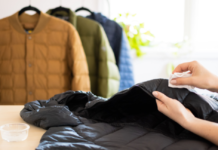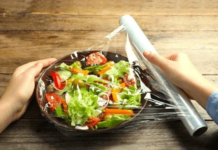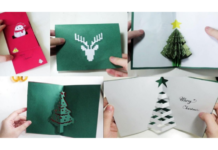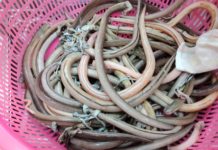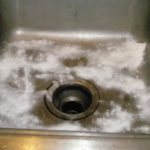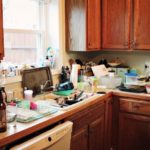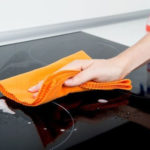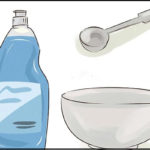These tips for stain removal will help you save time and effort when cleaning your house.
1. Stains on the stove
To clean spilled food on the stove, let it cool first before removing each item. Take a dishwashing sponge and add dishwashing liquid to clean the stove. Regular dish soap will not effectively remove food residues. Wait for 15 minutes and then use a warm sponge to check if the residue can be wiped off. If it is still not completely removed, add a few drops of water and wait another 15 minutes before wiping clean.
2. Food bits, soup drops, and various other food stuck to the kitchen hood and utensils
If it is difficult to wash, soak them with a little dishwashing liquid or a specialized cleaning agent. About ¼ of a spoonful of soap is enough. Wait for about half an hour, rinse, and dry.
3. Grease on the kitchen surface
Use white vinegar stored in a spray bottle. Pour a little vinegar onto a soft cloth and wipe the kitchen surface, avoiding porous or granite surfaces. If there is too much grease, use a cloth soaked in a degreaser diluted with water such as Dawn. Don’t forget to clean the top of the refrigerator as well, as it can get greasy too.

|
4. Stains on stainless steel utensils
Although stainless steel will still look as good as new, it can be difficult to clean stains and dirt on this material. To remove them, moisten the surface with a fine-fibered cloth. If there are greasy stains, clean them with soap and water or a solution of ammonia-scented water (avoid having wind blowing into the kitchen while using ammonia solution). Dry with a soft cloth.
5. Stains on bathroom sink
If you are afraid that scrubbing will scratch the surface, you can use a polishing powder. Carefully wet the surface, sprinkle some polishing powder onto the stains, and use a damp cloth or a soft sponge to scrub the stains.
6. Soap scum on bathroom walls or bathtub
It can be difficult to remove soap scum all at once. Use a clean fiber cloth with a mixture of fresh lemon juice, white vinegar, water, and baking soda. Gently rub them on the surface. You can use a non-abrasive scrubber and wait for 15 minutes before cleaning the stains. To prevent soap scum from accumulating again, use a rubber brush to remove excess soap in the water while draining the bathroom.
7. Hair gel residue on bathtub surface
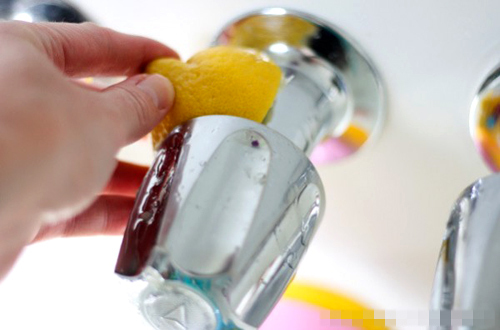
Use a cloth soaked in warm water to clean. If this method doesn’t work, try using a few drops of lemon-scented soap gel or a mixture of water and specialized cleaning soap with baking soda. Repeat the process several times, rinsing clean each time.
8. Dust on bathroom glass doors
Use white vinegar in a spray bottle or a specialized product to remove soap scum. Avoid using corrosive products that can scratch the glass surface. After cleaning, apply a little lemon extract or wax to prevent water buildup. To prevent buildup, use a rubber brush after showering and scrub dirt in the crevices and corners with a nylon brush.
9. Dust on curtains and window blinds
Do not use cleaning products, as they can make the curtains dirtier. Use a dry cloth to flatten the curtains and wipe them from side to side, from top to bottom. Then wipe the back surface.
10. Dirt in chandeliers
Clean them at least 1-2 times a year. “Dirty light bulbs emit about 20% less light than clean ones,” according to Smallin.
(Source: Womansday/Yeutretho/Seatime)
Tips for Keeping Your Kitchen Clean and Beautiful During Tet Holidays
As the new year approaches, many families face the challenge of juggling guests and a messy kitchen. But cleaning and organizing the kitchen doesn’t have to be a daunting task. Here are some tips to help keep the kitchen looking pristine and beautiful during Tet holidays, without sacrificing too much of your time and energy.






